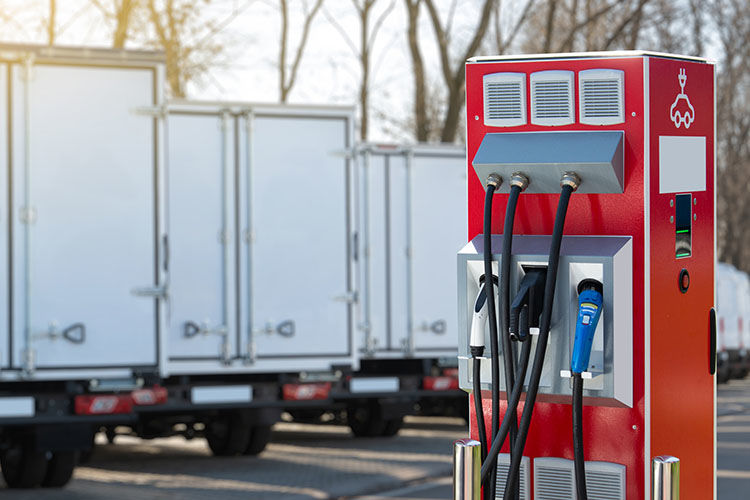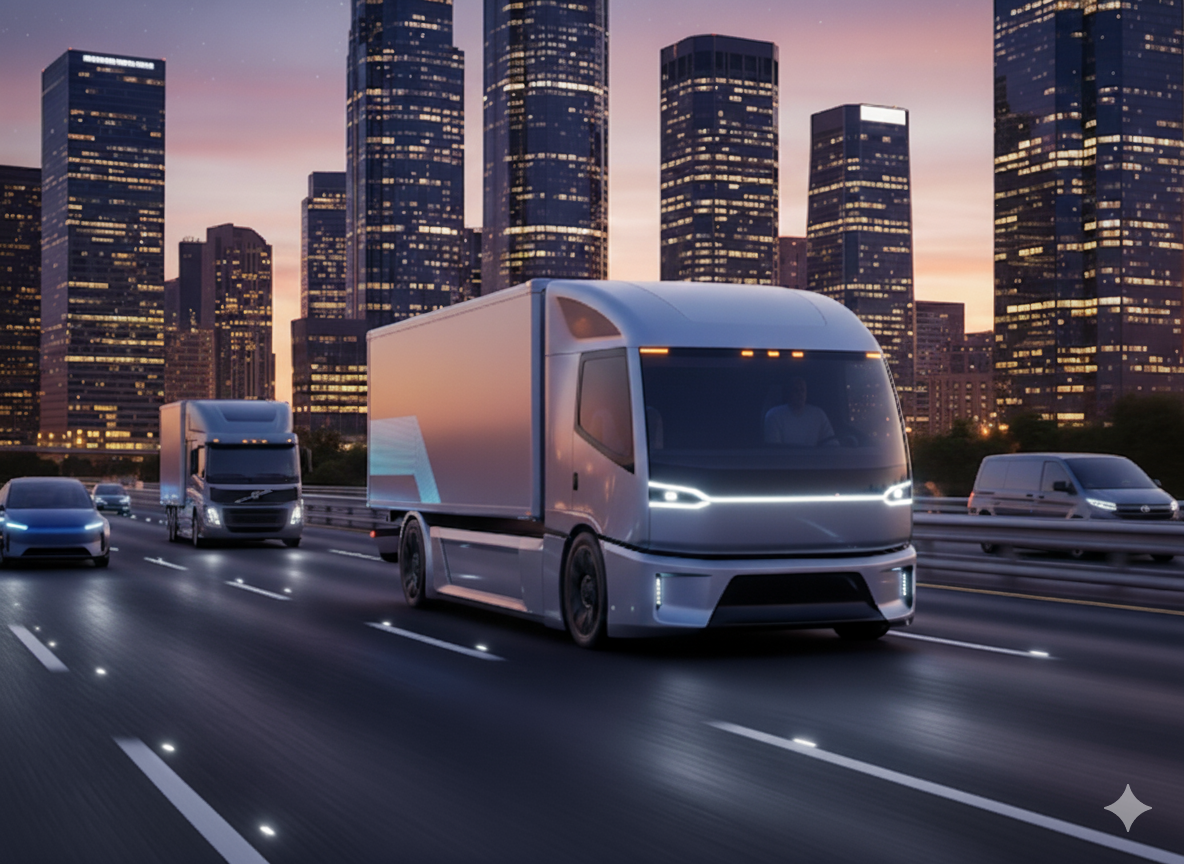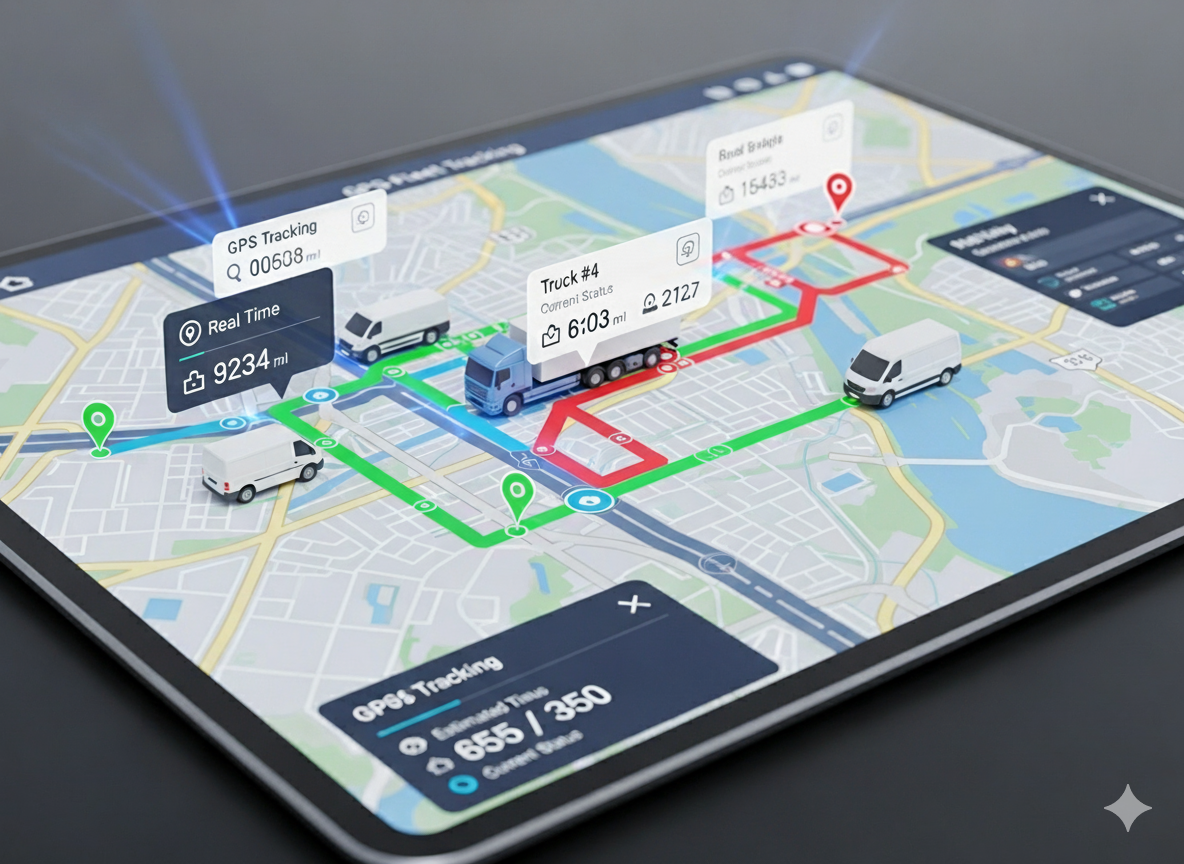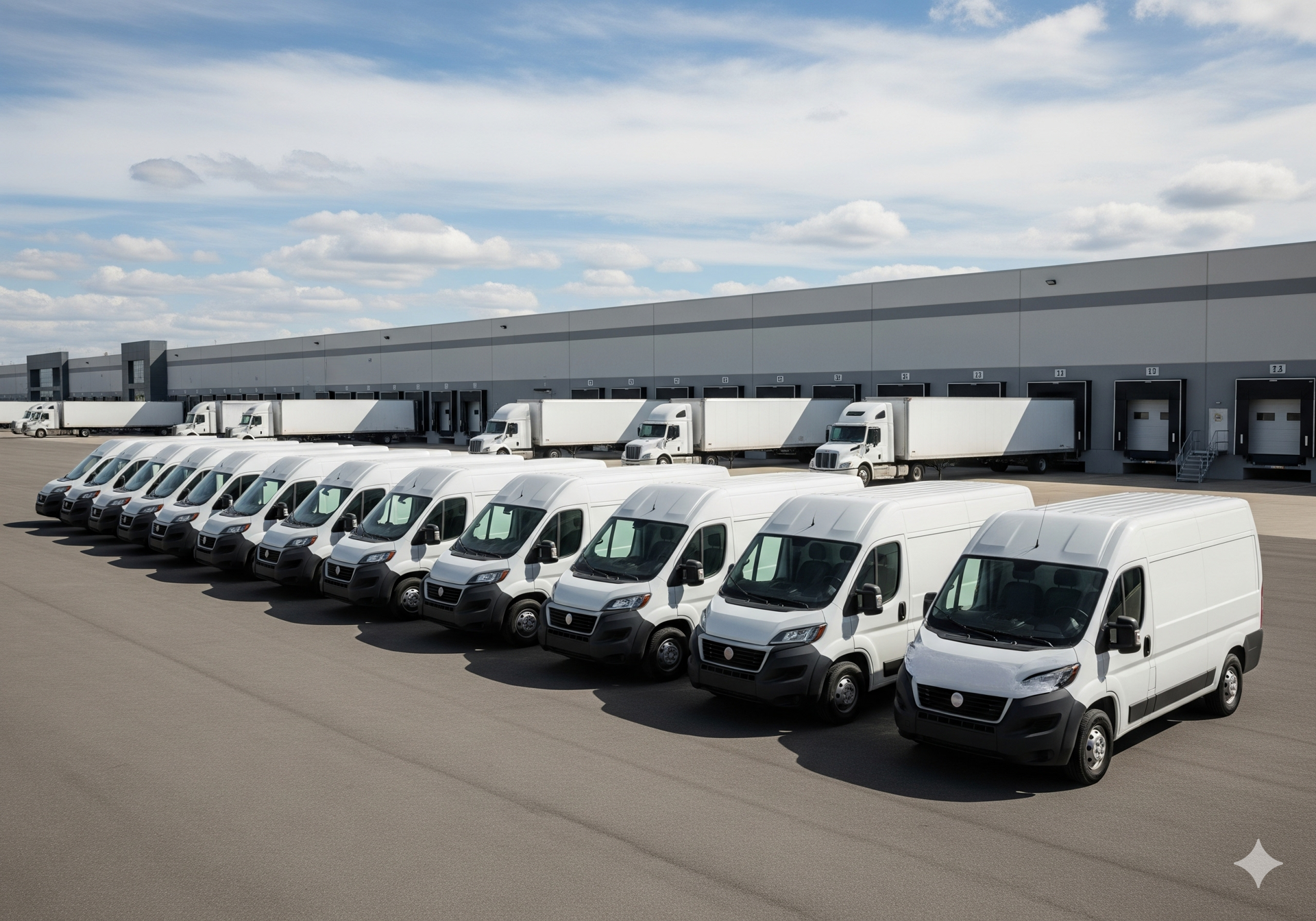The Blended Future of AltFuels In Commercial Transportation


The Blended Future of AltFuels In Commercial Transportation
Amid the clamor surrounding the rise of Electric Vehicles (EVs), there lies an unspoken reality—the commercial transportation industry is just not on a path of singular dependence on EVs.
The complex balance between environmental responsibility and commercial transportation cannot be satisfied solely by vehicle electrification, it also depends on the diverse potential of alternative fuels.
Conversations within the commercial vehicle industry make it increasingly clear that renewable fuels, hydrogen, and propane, the silent stalwarts of the alternative energy industry, will not be relegated to the backseat.
It’s also revelatory to consider the tremendous resources OEMs are spending to develop products that take advantage of propane, hydrogen, and renewable fuels. And these non-EV products are already coming to market.
A Myopic Mistake
Media, in general, seems to have a singular focus on EVs, excluding coverage of other less-touted, yet highly effective alternative, low-emission technologies.
“There’s a tremendous push from the U.S. federal government to clean up the environment, and EVs are getting a lot of attention right now, says Steve Whaley, Director of Autogas Business Development at PERC (Propane Education and Research Council). “But we need to distinguish between passenger and commercial vehicles because they have very different requirements. Passenger vehicles are a good match for an EV platform because they have small batteries and are relatively lightweight, but that exponentially changes when you get into the medium and especially heavy-duty market.”
Indeed, the current administration has earmarked huge amounts of funding toward overcoming the stumbling blocks to EV adoption.
SHOP ADVANCED FUEL VEHICLES NOW
For example, according to the EPA’s website “With funding from the Bipartisan Infrastructure Law, EPA’s new Clean School Bus Program provides $5 billion over the next five years (FY 2022-2026) to replace existing school buses with zero-emission and low-emission models.”
The EPA had posted a Notice of Funding Opportunity stating, “EPA’s Office of Transportation and Air Quality is announcing the availability of funds and soliciting applications from eligible entities to incentivize and accelerate the replacement of existing school buses with clean and Zero Emissions (ZE) school buses.” The notice explained, “Eligible activities include the replacement of existing internal-combustion engine (ICE) school buses with electric, propane, or compressed natural gas (CNG) school buses.”
Although these initiatives do mention “low-emission” and alt-fuels, there seems to be a dearth of coverage for anything except EVs.
But the fact is, when it comes to ecology, every form of transportation has an environmental impact of some sort. Each technology will be relatively more front or rear-loaded as far as where in its value chain the impact is greatest.
“We have to look at life-cycle analyses of the various forms of transportation,” explains Whaley. “The energy to manufacture and operate that vehicle came from somewhere. So all of those things need to be addressed and EV is in the spotlight right now to make that happen, but there’s a tremendous amount going on with other alternatives that doesn’t quite get that kind of a spotlight.”
A More Farsighted Approach To Cleaner Commercial Transportation
“There’s a very large metropolitan school district in the Northeast that has 1,600 vehicles and twenty-one of them are EVs,” confides Whaley. “They just ordered thirty-eight propane buses. That in itself tells a little bit of a story. Although both propane and EV school buses came out about 10 years ago, there are 22,000 propane school buses in the field compared to about 800 EV school buses. I think we’re doing pretty good.”
All of us must remember that there is no single silver bullet fix for reducing our environmental impact. Alternative fuels are not mutually exclusive either. For instance, even in use cases where EV technology is a good fit, the charging infrastructure may not be viable or even possible. In those cases, propane, solar, and wind generation systems can be used to charge EVs.
“Propane, wind, and solar in off-grid systems are charging EVs in ways that they haven’t been able to do before,” says Whaley. “There can be delays of up to three years for power companies to be able to get power to a certain location. But propane can make that happen quickly and easily because it’s such a portable and clean fuel.”
And it’s not just propane vs. EVs. There are multiple technology choices as we talk about alt fuels and which one is best suited to each use case.
“These are technologies that people can implement now, and that’s why we’ve looked at the fuel types and platforms we have,” adds Chris Vanasdalan, senior marketing communications specialist for Cummins’ on-highway segment. “We feel it’s critical for fleets to take action now versus waiting for a silver bullet solution, which we all know doesn’t really exist.”
The greatest hurdle to overcome may be a push to adopt electric tech to the exclusion of other alternatives that make more economic AND environmental sense. It’s all about how we overcome those hurdles with a mix versus a one-size-fits-all approach.
Recent, and current, disruptions to the fueling/recharging supply chain have also highlighted how a diverse infrastructure is much needed to build resilience and address risk management in our nation’s transportation needs.
Cleaner ICE Examples
Those familiar with the commercial vehicle industry know that despite what may happen within the passenger vehicle market, no matter what hoopla is made about future government bans on internal combustion engines (ICE), the future of commercial vehicles is not going to be an all-electric fantasy. Where commercial OEMs spend their R&D budget provides some reliable tea leaves for reading the future.

Ford Roush 7.3-Liter Propane Engine
The Ford Roush 7.3-liter propane engine is a compelling example of the effectiveness of alternative fuel solutions in the commercial vehicle industry. This motor is a result of a long-standing partnership between Ford Motor Co. and Roush CleanTech, a company known for providing advanced, environmentally friendly propane autogas fuel system technology.
Rated at 240 – 350 hp and torque of up to 468 lb-ft, the motor is comparable to gasoline and diesel-powered counterparts, and able to meet various commercial demands. All while achieving much lower emissions.
The real game-changer with the Ford Roush 7.3-liter Propane Engine is its environmental benefits. Propane autogas burns cleaner than gasoline or diesel due to its lower carbon content. This translates into significantly fewer greenhouse gas emissions, making it a key player in the quest to reduce commercial vehicle emissions.
The 7.3-liter propane engine is ready for integration into Ford’s commercial vehicle lineup. With propane autogas infrastructure already extensive in many regions across the globe, many commercial fleets can easily adopt this alternative fuel option. This engine showcases how the application of innovative technologies can blend with existing models to lessen the environmental impact without sacrificing performance.

Cummins 6.7-liter Propane Engine
In December 2020, Cummins and PERC entered into a joint project to develop Cummins’ 6.7-liter engine into a commercially viable propane power plant in 2024.
“In testing, the Cummins B6.7 propane engine delivered the lowest greenhouse gas emissions of any propane autogas-powered engine,” boasted Puneet Singh Jhawar, General Manager of the global natural gas business for Cummins Inc. “It will also deliver some of the lowest GHG emissions in the medium-duty market. It is an ultra-low, .02 NOx engine that will meet or exceed EPA and CARB regulations in 2024 and beyond.”
The relatively higher octane content of propane allows manufacturers to use higher compression ratios that achieve astounding efficiencies improving miles-per-gallon, horsepower, and torque. According to Cummins, the propane engine is expected to produce between 280–360 hp and 600–860 lb.-ft. of torque; tailor-made for light and medium-duty applications.
“That [kind of power] makes this capable to be not just a workhorse but the cleanest workhorse that exists,” says Sam Geckler, technical project leader at Cummins. “That’s the kind of stuff that gets me out of bed in the morning.”

Hydrogen-Powered ICE Commercial Vehicles
Propane is not the only ready alternative either. Cummins is also showing off its brand-new B6.7H hydrogen internal combustion engine at the Busworld Convention in Brussels, Belgium this year.
According to Cummins, the B6.7H is rated at 290 hp, 885 ft-lbs of peak torque, and provides “diesel-like performance using zero-carbon hydrogen fuel for coach applications in the 9-10m range. It provides a path to zero-carbon emissions that is familiar to OEMs and operators. Its similarity with current diesel and natural gas-powered vehicles reduces integration complexity, while high parts commonality supports optimized parts procurement strategies for operators running mixed fuel fleets.”
Cummins plans to make the 6.7 propane engine, and other low-emission options, available in their 2026 lineup.
“We’re really excited about these medium-duty propane engine advancements,” says Whaley. “We have a great partner with Ford and Rousch on the 7.3-litre propane engine available in many Ford Chassis. But we want propane engines to be available in all the truck OEMs, so partnering with Cummins, who is a provider to all the other truck OEMs, is very important.”[1] [2]
It looks like Whaley et al are getting their wish—with consumers inheriting all the benefits.
SHOP ADVANCED FUEL VEHICLES NOW
Published on: December 12, 2023 Commercial Fleet Electrification: CTE’s Scalable Approach to Zero-Emission Deployment
Commercial Fleet Electrification: CTE’s Scalable Approach to Zero-Emission Deployment Navigating the EV Transition: Key Considerations for Fleet Electrification
Navigating the EV Transition: Key Considerations for Fleet Electrification Electric Commercial Trucks 2025: Market Growth & Top Models
Electric Commercial Trucks 2025: Market Growth & Top Models Fuel-Efficient Fleet Strategies: Cut Fuel Costs & Boost MPG 2025
Fuel-Efficient Fleet Strategies: Cut Fuel Costs & Boost MPG 2025 Most Fuel Efficient Cargo Vans for 2025 | Compare Top MPG
Most Fuel Efficient Cargo Vans for 2025 | Compare Top MPG







